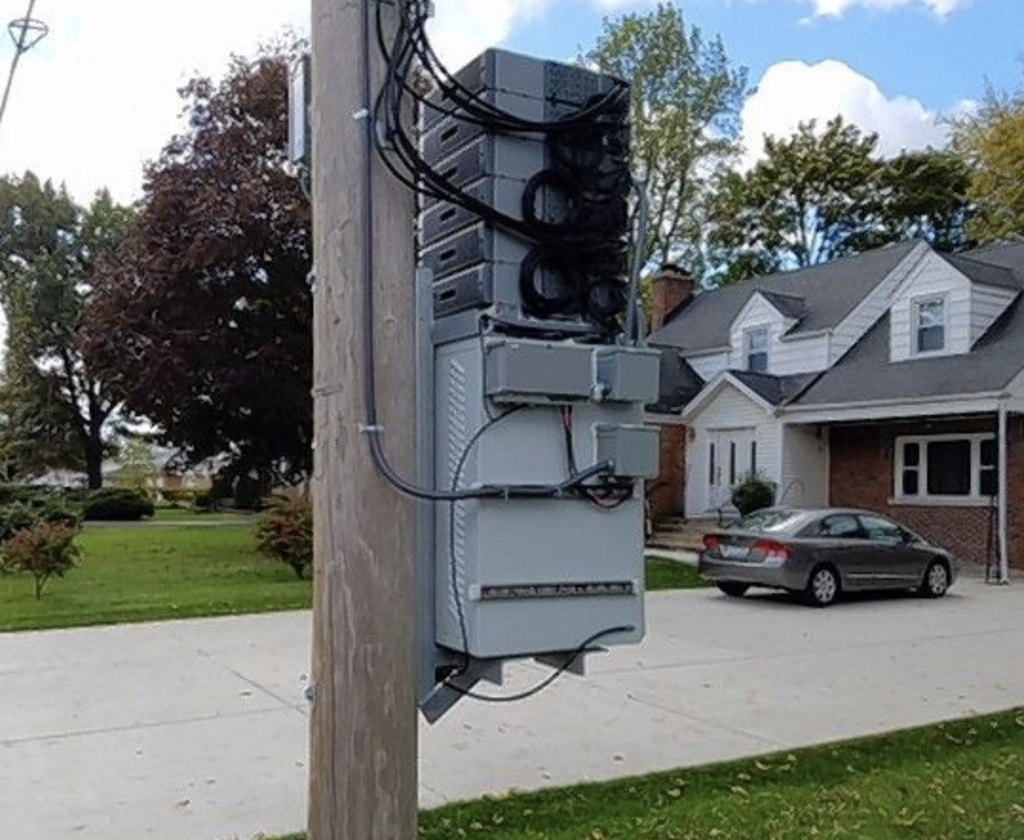What is the safest distance coming from a 5G cell Tower system?

If you've ever walked through a town, you may have seen tiny 5G cell towers on the poles of street lights. They look like little boxes however they're actually sending wireless signals from cellular providers to your phone.
The smaller ones are being replaced by larger specially-designed cell towers. While they're not as noticeable, they still can cause problems for people.
safe distance from 5g tower of the FCC's Radiation Exposure Thresholds
The FCC's Radiation Exposure Thresholds establish the maximum amount of time a person can be exposed to electromagnetic radiation from wireless devices. The exposure limits are based on research that prove that electromagnetic energy can cause harm to health.
The rate of absorption called the specific absorption rate (SAR) is a measure of the amount of radiofrequency energy absorbed by tissue. It's usually 1.6 Watts per kilogram spread over a gram of tissue.
But, since 5g operates at higher frequencies, it has the potential to cause greater energy intensity on the skin and other directly-exposed body parts. This could lead to various possible harms, like the appearance of skin conditions such as dermatitis, cataracts and skin cancer.
:max_bytes(150000):strip_icc()/network-caowei-getty-images-5c40ce93c9e77c000167154e.jpg)
Due to the possible severe effects of 5g radiation, PSU has chosen to establish a general, localized limits on power density, which is 4mW/cm2 averaged over 1 cm2, but not to exceed 30 minutes for the entire 5G spectrum at 3000 GHz. This localized limit is consistent with the highest SAR spatial-average of 1.6 W/kg averaged over 1 grams of tissues at six GHz.
The FCC's Maximum Exposure Thresholds for Maximum Exposure

If you've ever used a cell phone, you're probably aware that a safe location from the tower is at least 400 meters. This is because the power of the transmission of a cell tower increases dramatically the farther your location from the tower.
Although this may sound like an ideal idea, the reality is that people living in close proximity to towers might be more vulnerable to health problems. For instance, a study conducted in 2014 in India discovered that those who lived within 50m from cell towers suffered significantly more health complaints than those who lived farther away from the antennas.
But, the study showed that residents who moved to areas further away from cell towers noticed their symptoms return to normal within a couple of days. Other studies have demonstrated that exposure to extreme levels of radiofrequency electromagnetic fields (EMFs) can lead to brain tumors, cancers, and other health problems.
This is due to the fact that radiofrequency radiation, which is utilized in wireless communications, may be absorbed by the body's outer layer of skin. It is crucial to know because the skin acts as a protective barrier against injury to the body, infection from pathogenic microorganisms, as well as the entry of harmful substances. Additionally, it is the most important organ in the human body and is responsible for protecting other organs.
The FCC's Minimum Exposure Thresholds
The FCC's Minimum Exposure Thresholds are based on several assumptions that are not supported by scientific research. They include the false belief that exposures to RF radiation are safe due to minimal radiation penetration in the human body (i.e. the heating of tissues).
The assumption also ignores the greater penetration of ELF parts of modulated RF signals as well as the consequences of brief bursts of heat caused by RF pulses. These theories are not compatible with current understanding of the biological consequences of RF radiation. As such they should not be considered for health protection exposure standards.
Furthermore there is the fact that both ICNIRP and FCC are limiting their maximum radiation limits for local peak SARs based on the peak frequency of absorption (psSAR) which is not a reliable dosimetric instrument to assess the amount of radiation exposure. In particular it is inconclusive for frequencies that exceed 6 GHz. Furthermore, psSAR has not been tested for RF radiation exposed to other environmental agents , such as sunlight. Interactions of RF radiation with other agents in the environment could cause synergistic or antagonistic effects. This can lead to the risk of having adverse health consequences. For instance, exposure to RF radiation along with exposure to sunlight can cause an increase in the incidence of developing skin cancer and exacerbate other skin conditions like acne.
